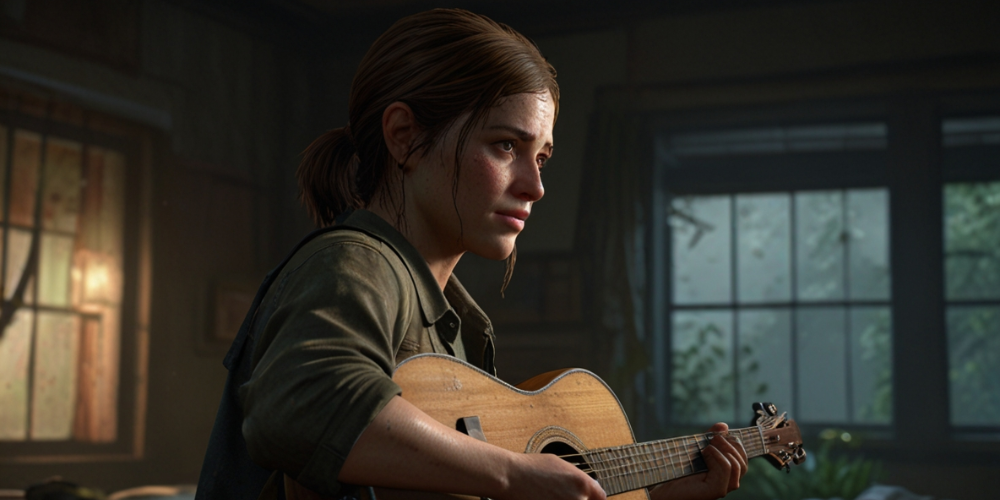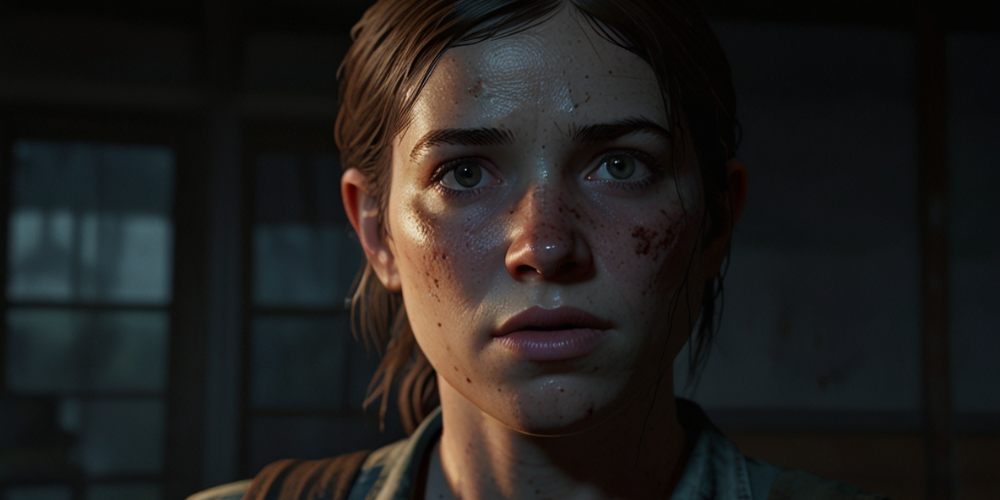The Impact of Storytelling in The Last of Us Part II: A Closer Look at Character Arcs
Aug-16-2024

The Last of Us Part II immerses players in a richly crafted world that feels both familiar and haunting. The narrative unfolds in a post-apocalyptic setting, where the remnants of civilization are interspersed with nature's reclaiming force. Every location, from desolate urban avenues to overgrown encounters, tells its own story through environmental design. Players navigate and explore these intricately designed spaces, encountering echoes of humanity's past life, underscoring the tragic circumstances faced by each character.
Complex Characterization
This sequel takes character development to new heights by diving deep into the emotional complexities of beloved characters. Now a young adult, Ellie grapples with the burden of loss and revenge, while new characters like Abby challenge players' perceptions and expectations. This duality invites exploration of motivations and moral ambiguities, deepening the storytelling experience.
Moral Dilemmas
The game introduces a range of moral dilemmas that the characters face, forcing players to confront their values and decision-making processes. Ellie seeks vengeance for a personal tragedy, yet the repercussions of her actions raise questions about justice and morality. On the other hand, Abby embodies a character shaped by her own losses, complicating the narrative by presenting a different side of the cycle of revenge.
Emotional Connectivity
A remarkable feature of The Last of Us Part II is its skillful ability to stir a wide range of emotions in players. The intricate dialogue, thoughtfully designed cutscenes, and expressive facial animations enable characters to convey feelings of sorrow, rage, anxiety, and optimism. Through nuanced dialogue, meticulously crafted cutscenes, and facial animations, characters express grief, anger, fear, and hope. These emotions resonate personally, breaking the barrier between the player and protagonist and fostering a deep emotional connection.
Narrative Structure

The narrative structure of The Last of Us Part II is layered and non-linear, facilitating a multi-perspective storytelling experience. Players alternate between controlling Ellie and Abby, leading to an intricate exploration of their respective backstories. This dual perspective invites players to reassess their biases and preconceptions, enhancing the overall narrative depth.
The Role of Flashbacks
Flashbacks serve as a pivotal storytelling device throughout the game, providing context to current events and delving into character histories. These moments of reflection uncover essential past experiences that shape the characters' motivations and decisions. By juxtaposing memories against present realities, the game emphasizes the theme of how the past influences the present.
Thematic Exploration of Love and Loss
Central to the storyline is exploring love and loss, two intertwined themes. Ellie’s journey is profoundly shaped by her relationships, particularly with Joel, whose absence leaves a void. The game meticulously examines how love can spur both healing and destruction, demonstrating its power to drive characters toward dark paths in searching for closure.
Subversion of Expectations
The Last of Us Part II smartly subverts players' expectations, leading them on a path that defies conventional storytelling. Initial assumptions about heroes and villains become blurred as both Ellie and Abby explore the line between right and wrong. This ambiguity keeps players engaged, encouraging them to question their judgments regarding the characters’ choices.
Symbolism and Motifs

Symbolism is prevalent throughout the game, with motifs such as music, fire, and water holding significant meaning. For instance, the guitar symbolizes Ellie’s connection to Joel and her past, while water often represents change and emotional turmoil. Such symbols enhance thematic richness, allowing players to derive deeper meanings as they progress through the narrative.
Dialogue and Voice Acting
The dialogue in The Last of Us Part II is notably authentic, filled with raw emotion and nuanced interactions. Voice acting, led by standout performances, conveys the depth of the characters' feelings, effectively immersing players in the story. The combination of well-written dialogue and top-tier voice performances amplifies the emotional resonance of the narrative.
Mechanics and Player Choice
Gameplay mechanics are interwoven into the narrative experience, allowing players to explore character choices actively. Players make decisions that impact gameplay, reflecting the moral complexities faced by the protagonists. These mechanics enhance immersion and allow players to experience the weight of their actions, grappling with the consequences that unfold.
The Impact of Music
Music plays a crucial role in elevating the emotional tone of The Last of Us Part II. The haunting melodies and somber tracks enhance key moments, making them resonate more profoundly with players. The strategic use of music enriches the atmosphere, often becoming a character in itself that underscores the emotions conveyed throughout the journey.
Exploring Themes of Empathy

Empathy stands at the forefront of the game's design, compelling players to understand the motivations and struggles of each character, regardless of their role in the narrative. This theme is reinforced through interactions between Ellie and Abby, allowing players to experience the shifting dynamics of vengeance and understanding, ultimately questioning what it means to empathize with one's enemy.
Visual Storytelling
The visual quality in The Last of Us Part II is impressive, featuring vibrant landscapes and an extraordinary level of detail that forms a breathtaking narrative setting. The game's artistry tells stories without words, using visuals to evoke emotions and enhance character arcs. Each scene is thoughtfully composed, allowing players to interpret the story through visual cues.
Realism and Humanity
The Last of Us Part II delivers a realistic portrayal of its characters, allowing players to connect with them on a profoundly human level. The game depicts characters as avatars and individuals with rich emotional lives, each carrying distinct personalities and histories. Players frequently witness the characters expressing a wide range of emotions, from intense anger and sadness to fleeting moments of joy, all of which contribute to a more immersive experience.
Every character in the game bears the weight of their past experiences, shaping their motivations and decisions throughout the narrative. Ellie’s journey, for instance, showcases her struggles with grief and revenge, while Abby's arc invites players to understand her personal motivations tied to familial love and loss. These internal conflicts are conveyed through intricate animations and facial expressions, which capture the subtle nuances of human emotion—elements that make the characters feel genuinely relatable.

The game doesn't shy away from showcasing trauma, an essential aspect of the human experience in its post-apocalyptic world. Characters navigate their pain with varying degrees of resilience, exposing the different ways individuals cope with suffering. This portrayal of vulnerability invites players to confront uncomfortable realities, emphasizing that trauma does not merely vanish but continues to shape who we are. Players witness characters falter, falter, and occasionally rise again, reflecting the complexities of human life played out against the backdrop of chaos and survival.
Furthermore, the relationships between characters—whether they are friendships, familial bonds, or adversarial encounters—reveal the shared experiences that define humanity. Through their interactions, players observe how love and conflict coexist, highlighting the connections that remain vital even in dire circumstances. The emotional depth embedded in these interactions cultivates empathy, prompting players to reflect on their relationships and the impact of choices made in moments of despair.
This intricate blend of realism and humanity stems from a commitment to authenticity that permeates every aspect of the game. From the dialogue and character design to the immersive environments, each element draws players into the story's emotional core. By presenting characters that grapple with their very humanity, The Last of Us Part II not only entertains but also resonates deeply, making players feel their struggles and triumphs as they navigate an unforgiving world.
Legacy and Impact on Gaming
The Last of Us Part II challenges the boundaries of storytelling within the gaming medium. Its bold narrative choices and character arcs pave the way for future games to explore deeper emotional engagement and complex moral narratives. The game exemplifies the continuous evolution of narrative in video games, leaving a mark on both creators and gamers.







